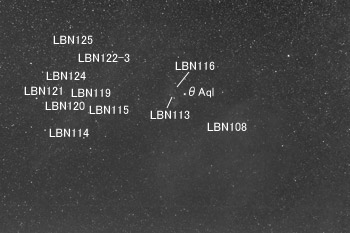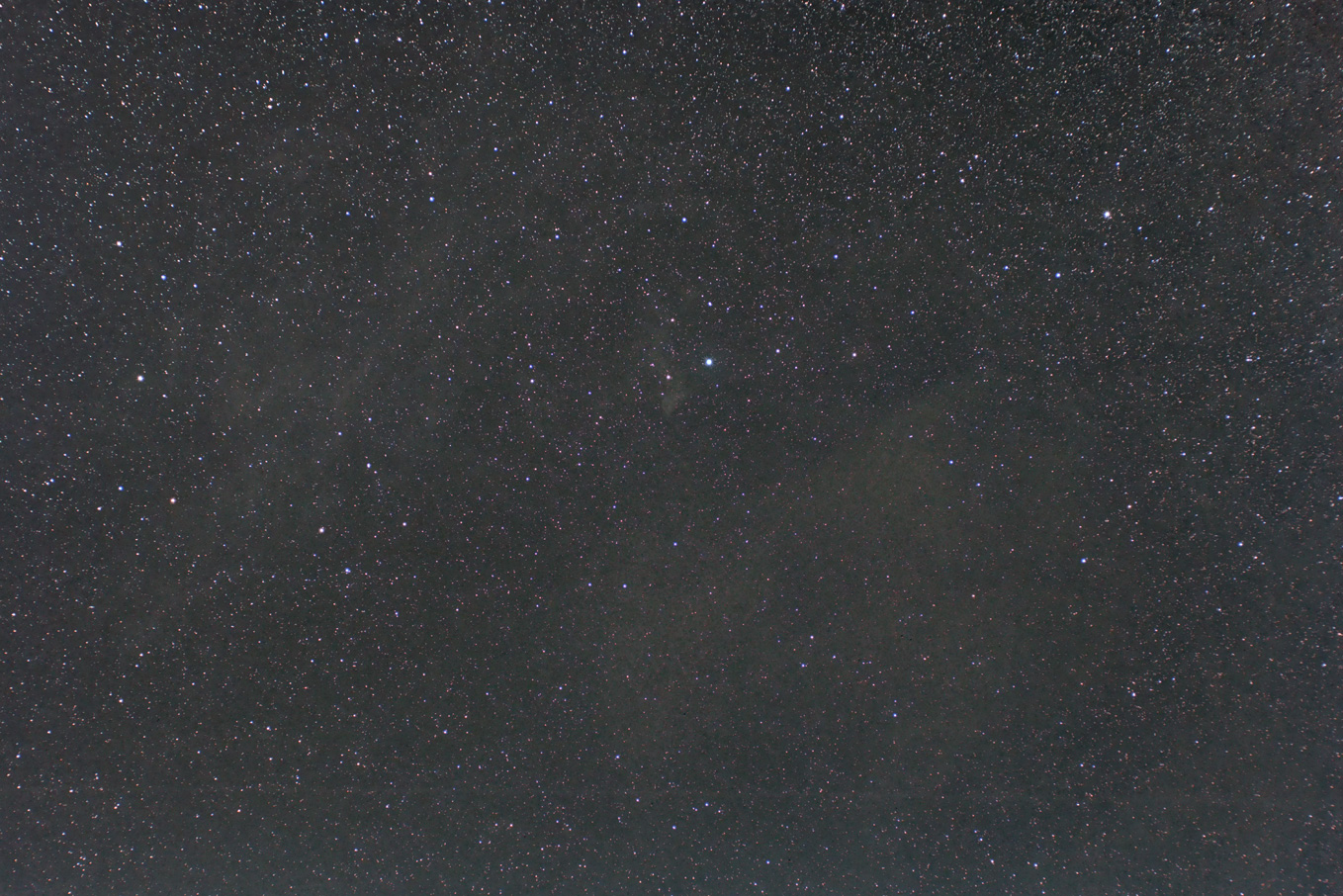| LBN 108 / Molecular Cloud, type 6 E |
|---|
| R.A. | 20h 03m 00.0s (2000.0) |
|---|
| Dec. | -01°54' 00" (2000.0) |
|---|
| Apparent Size | 150×50' |
|---|
| Real Size | N/A |
|---|
| Magnitude | - |
|---|
| Distance | N/A |
|---|
|
| LBN 113 / Molecular Cloud, type 5 E |
|---|
| R.A. | 20h 14m 00.0s (2000.0) |
|---|
| Dec. | -00°48' 00" (2000.0) |
|---|
| Apparent Size | 70×20' |
|---|
| Real Size | N/A |
|---|
| Magnitude | - |
|---|
| Distance | N/A |
|---|
|
This is a 16.7×11.2° star field capturing the region around θ Aquilae in the southern part of the constellation Aquila.
This area lies near the eastern edge of the summer Milky Way and contains faint molecular clouds.
LBN 108, which extends southwest of θ Aquilae, is listed in catalogs as having a size of 2.5 degrees, but in reality, it spreads over more than twice that area.
Additionally, the relatively dense LBN 113 is located near θ Aquilae, and on the left side of the image, a large mottled molecular cloud can be seen, with several catalog numbers assigned to different parts of it.
 |
Molecular Clouds around Aquilae |
|

